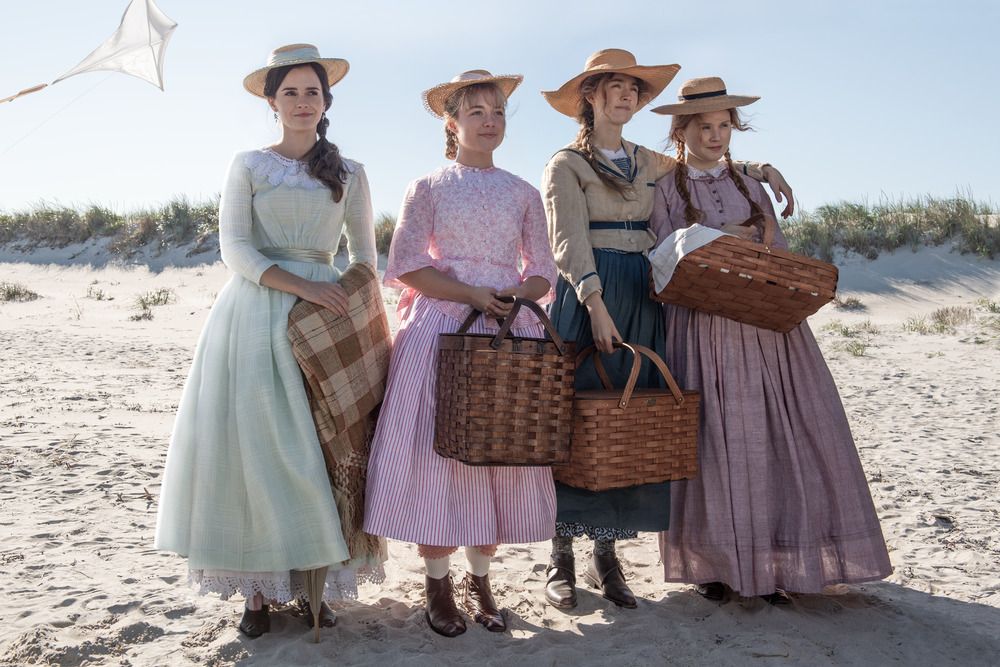
By Catherine Taylor
When the latest screen adaptation of Louisa May Alcott’s Little Women debuted on St. Stephen’s Day 2019, the film became an instant hit. Lauded by book fans and critics alike, Greta Gerwig’s highly anticipated adaptation of the eponymous novel has managed to do the impossible; seamlessly bridge the gap between its 19th century setting, and its 21st century audience. Having previously found unprecedented success with 2017’s Lady Bird, Ireland’s own Saoirse Ronan stars as the story’s protagonist, Jo March. In Little Women, Gerwig (who directed Lady Bird), Ronan and Hollywood’s “it” boy Timothee Chalamet, who also stars in both films, once again prove themselves to be the golden trio of cinema. Ronan effortlessly portrays stubborn Jo, while Chalamet again plays her love interest, Laurie.
Gerwig’s characterisation is perhaps one of the most stellar achievements of this adaptation. Each character has been flawlessly fleshed out; whether their role is major or minor, you get the sense that everyone you see on screen is a real person, rather than a mere plot device (Chris Cooper’s turn as Laurie’s grieving uncle is especially poignant). The four March sisters, Jo (Saoirse Ronan), Meg (Emma Watson), Amy (Florence Pugh) and Beth (Eliza Scanlen) are perfectly cast, with Ronan expertly stepping into the role she herself believed she was born to play. Jo’s characterisation is executed with precision: Gerwig’s deep understanding of Jo’s personality is evident, as she and Ronan work to showcase both Jo’s admirable traits, and her faults, in equal measure.
But perhaps the film’s best work lies not in its protagonist, but in the characterisation of the youngest March sister, Amy. Prior to Gerwig’s adaptation, Amy was most definitely fans’ least favourite of the four sisters. As the youngest, her character has a tendency towards brattiness and can be spoiled. However, 2019’s remake gives a remarkably fresh perspective on an old literary villain. The film’s breakout star and the internet’s new darling, Florence Pugh, gives Amy a deepened maturity with her measured performance, whilst still maintaining the character’s signature humour. Whilst in previous adaptations, Amy’s eventual marriage to Laurie seemed unprecedented (as readers expected him to be paired with headstrong Jo), Gerwig’s film gives Chalamet and Pugh sufficient screentime to truly bring their blossoming romance to life.
In terms of setting and cinematography, Little Women is a sprawling, exuberant spectacle of colour and beauty. In its 3-star review, the Irish Times writes that the film’s “unremitting gorgeousness robs the material of all its grit, of its satire, of the sense of precariousness that one experiences on the characters’ behalf, of the fear of hunger, and of the dread that any chill or fever might be a death sentence”. This is a fair criticism; the March sisters of the books are infinitely worse off financially than Gerwig’s little women. The film certainly highlights the family’s grapples with financial difficulties; but only eldest sister Meg’s run-down family home, visited in one or two brief scenes, breaks the barrage of beautiful scenery to show the stark reality of living with very little money.
To say that Greta Gerwig’s Little Women has lived up to, if not surpassed, its predecessor would be entirely accurate. Only 1994’s version, starring Winona Ryder as Jo, could compete with Gerwig’s skilfully crafted interpretation for a modern audience. Through expert characterisation and Oscar-worthy performances, 2019’s Little Women introduces a classic story of the lives of four young women to the 21st century.